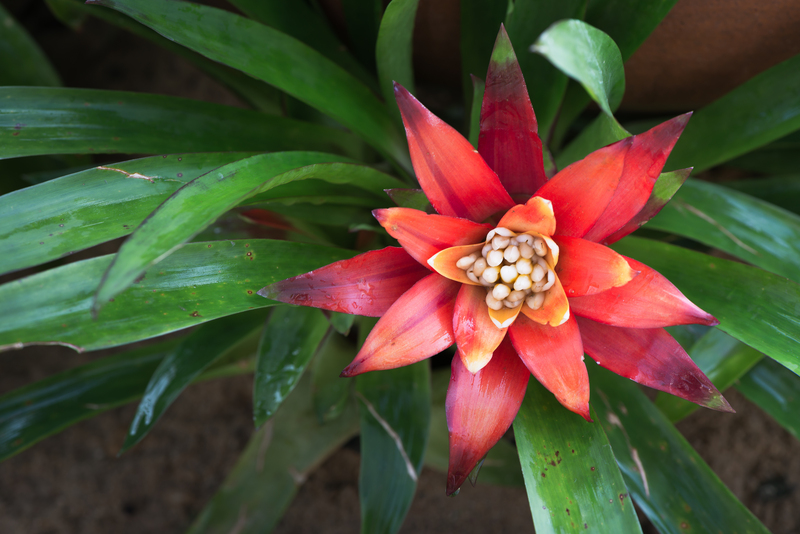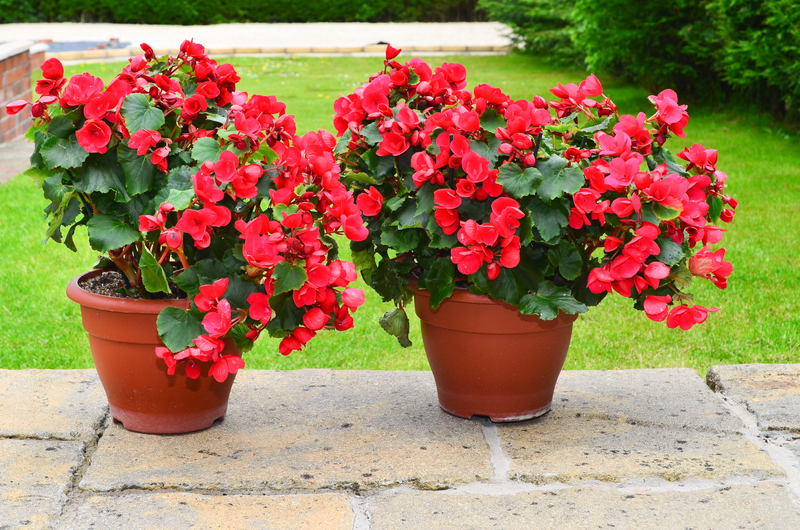Proven Methods to Guard Plants in Winter
Posted on 18/06/2025
As the temperature drops and frost looms, plant enthusiasts and gardeners face the annual challenge of protecting plants in winter. Whether you are an avid horticulturist or maintain a small backyard garden, ensuring your beloved flora survives harsh weather is crucial. This comprehensive guide explores proven methods to guard plants in winter, incorporating effective strategies, helpful tips, and answers to frequently asked questions, all aimed at helping you cultivate a resilient and thriving garden, even when the mercury plummets.
Why Winter Protection Matters
Many plants, from delicate perennials to potted specimens, can suffer irreparable damage during the cold months. Frostbite, dehydration, and root damage are common risks. However, with winter plant care, you not only protect your investment but ensure a vibrant garden come spring. Understanding what makes winter stressful for plants is the first step in proactive protection.
Common Winter Hazards for Plants
- Frost--damages cell walls, causing leaves and stems to wilt and die.
- Dehydration--frozen ground restricts water uptake, leading to "winter drought."
- Desiccating winds--strip moisture from foliage and branches.
- Heavy snow and ice accumulation--breaks branches and crushes shrubs.
- Temperature swings--rapid freezing and thawing causes root and stem cracks.

Choosing the Right Plants for Winter
One of the easiest ways to minimize winter woes is through strategic plant selection. Always opt for plants hardy to your zone if you desire a low-maintenance winter garden. Native plants are typically better adapted to local climates and survive winter extremes more efficiently.
- Check USDA Hardiness Zones: Match species to your region's cold tolerance levels.
- Favor Deciduous Trees and Shrubs: These lose their leaves, reducing winter stress.
- Opt for Perennials with Deep Roots: These plants access water stored deep underground.
- Choose Drought-Tolerant Varieties: Reduce the risk of winter dehydration.
Effective Winter Plant Protection Methods
With the groundwork set, let's explore proven ways to guard your plants in winter and ensure their survival.
1. Mulching for Winter Protection
Mulching is a time-tested strategy to shield plants from harsh winter conditions. Properly applied mulch acts as an insulating blanket, keeping soil temperatures stable and maintaining essential moisture.
- Apply a 2-4 inch layer of organic mulch (such as shredded leaves, straw, pine needles, or wood chips) around the base of plants.
- Insulate root zones against temperature fluctuations and frost heaving.
- Avoid piling mulch against trunks or stems to prevent rotting and rodent damage.
2. Using Row Covers and Plant Blankets
Row covers and plant blankets provide flexible, reusable protection for cold-sensitive plants. These barriers shield flora from frost, wind, and even some pests.
- Lightweight floating row covers allow sunlight and moisture penetration while blocking frost.
- Use burlap or horticultural fleece for shrubs and small trees.
- Secure covers to the ground with stakes or weights to prevent wind from dislodging them.
- Remove covers on sunny days to avoid overheating and promote air circulation.
3. Creating Windbreaks
Desiccating winds can quickly dry out foliage, especially evergreens. Installing windbreaks such as fences, walls, or even temporary screens can significantly reduce wind exposure.
- Use burlap, plastic, or wood screens to shield vulnerable beds.
- Plant evergreen hedges or shrubs as natural windbreaks.
- Place windbreaks on the prevailing wind side for maximum effectiveness.
4. Watering Before Frost
Proper hydration is often overlooked in winter plant care. Moist soil holds warmth better than dry soil, protecting roots from deep freezes.
- Water thoroughly before the ground freezes.
- Focus on newly planted trees, shrubs, and evergreens.
- Avoid overwatering which can lead to root rot.
5. Shelter and Relocation for Potted Plants
Potted plants are especially vulnerable as their roots are exposed to temperature swings. Utilize the following strategies:
- Move pots into sheltered locations--garages, sheds, or enclosed patios.
- Cluster pots together and wrap with insulating material (bubble wrap, burlap, or blankets) for communal warmth.
- Elevate containers off the ground with bricks or pot feet to prevent freezing from below.
6. Pruning and Plant Maintenance
Pruning plants before winter can help minimize damage from snow and ice. Remove dead or diseased branches that are more likely to break under stress.
- Prune in late fall after dormancy starts but before severe cold.
- Trim evergreen hedges to prevent wind damage.
- Avoid heavy pruning of spring-flowering plants to prevent loss of blooming buds.
7. Anti-Desiccant Sprays
Winter winds and sun can dry out foliage, even in dormant plants. Anti-desiccant (anti-transpirant) sprays form a protective coating on leaves, reducing moisture loss.
- Use on broadleaf evergreens and rhododendrons.
- Apply when temperatures are above freezing.
- Avoid spraying on edible or herbaceous plants unless product is approved for such use.
Special Considerations for Different Plant Types
Protecting Evergreen Shrubs and Trees
Evergreens retain leaves all winter, making them particularly susceptible to drying winds and heavy snow. To protect:
- Wrap loosely in burlap or clear plastic, leaving room for air circulation.
- Gently shake off snow accumulation to prevent branch breakage.
- Apply anti-desiccant sprays as an extra precaution.
Winter Care for Tender Perennials
Tender perennials such as cannas, dahlias, gladiolus, and some herbs need extra care:
- Dig up tubers and bulbs after the first frost and store in a cool, dry place.
- For in-ground plants, use extra mulch or cover with straw for insulation.
- Monitor closely for early sprouting if a warm spell occurs.
How to Guard Fruit Trees in Winter
Fruit trees can suffer bark cracking, rodent damage, and bud loss:
- Apply a white tree wrap or guard to reflect sunlight and prevent sunscald.
- Protect the base from rodents with hardware cloth or trunk guards.
- Avoid heavy pruning until late winter or early spring.
Winter Protection for Lawns
Lawns can also benefit from winter care:
- Keep grass mowed short (but not scalped) for the last cut before frost.
- Remove heavy leaf litter to prevent mold and fungal diseases.
- Aerate compacted soil and add a light layer of compost for nutrients.
Extra Tips for Cold Climate Gardeners
- Monitor long-range weather forecasts and have row covers or mulch ready for sudden cold snaps.
- Avoid using salt or de-icers near plants; runoff can damage roots and soil health.
- Inspect plants regularly for rodent damage, especially under snow cover.
- Encourage snow cover on beds as an insulating blanket but shake off excess on shrubs and small trees.
Winter Plant Protection: Myths vs Facts
- Myth: Covering plants with plastic is the best option.
Fact: While plastic can provide some frost protection, it prevents moisture exchange and can cause overheating on sunny days. Always use breathable materials, or keep plastic from direct contact with foliage. - Myth: Only tropical plants need winter protection.
Fact: Many temperate species, including even some native plants, benefit from extra care during extreme conditions. - Myth: Watering plants in winter isn't necessary.
Fact: Dehydration is a serious threat. Water well before the ground freezes and during warm spells if soil thaws.
Signs of Winter Damage in Plants
- Wilted or blackened leaves and stems after a frost or freeze event.
- Browning and drying of evergreen foliage, often on the windward side.
- Cracked trunks or stems ("frost cracking").
- Mushy roots or crowns from waterlogging and subsequent freezing.
- Poor bud development in late winter or early spring.
Post-Winter Recovery: Helping Plants Bounce Back
If your plants do suffer winter injury, don't lose hope. Many will recover with proper post-winter care:
- Wait until late spring to prune dead wood; new shoots may emerge from living tissue.
- Fertilize lightly once new growth appears, to support recovery.
- Monitor for pests and diseases that may take advantage of weakened plants.
- Gradually remove mulch as temperatures rise to prevent rot and encourage soil warming.

Frequently Asked Questions on Winter Plant Protection
How can I protect my garden from frost?
Use row covers, cloches, or even old sheets to trap ground heat overnight. Remove them during the day to allow sunlight and air circulation.
Is it too late to mulch in winter?
No--mulching can be done any time before the ground hard-freezes. Late applications still offer root protection against deep cold spells.
Which materials work best for winter covering?
Burlap, frost cloths, horticultural fleece, and even cardboard are excellent. Avoid airtight plastic which can trap moisture and lead to fungal issues.
Can I use household items for plant protection in winter?
Yes, items such as old blankets, towels, and cardboard boxes can provide emergency frost protection. Just ensure they are removed during sunny days or dry spells.
Conclusion
Protecting your plants from winter's chill is both an art and a science. By combining proven methods to guard plants in winter, observing local conditions, and understanding the unique needs of your green friends, you ensure their resilience against cold, frost, and wind. Through thoughtful preparation--mulching, covering, hydrating, and sheltering--your garden's winter survival rate will soar, rewarding you with lush, healthy growth when spring arrives. So gear up, plan ahead, and give your plants the careful winter protection they deserve!

